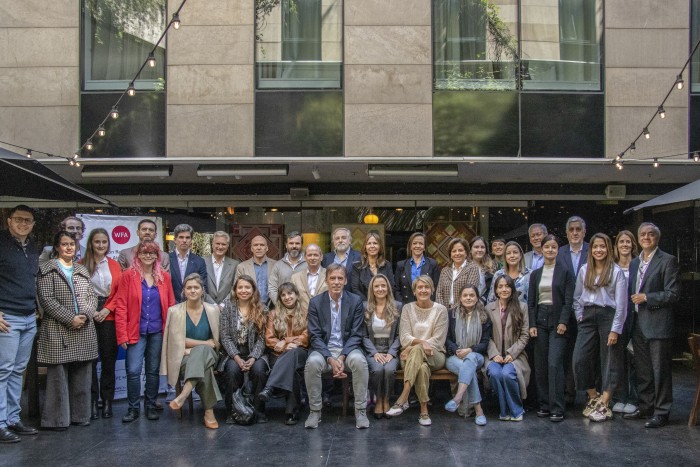Get analysis, insight & opinions from the world's top marketers.
Sign up to our newsletter.
Advertisers’ priorities and concerns in Latin America are more aligned than ever with our members’ global agenda, and that gives us a renewed sense of purpose, says WFA CEO Stephan Loerke as he reflects on this year’s WFA regional meeting in LATAM.

There’s no substitute for seeing marketers face to face, and two days in Buenos Aires will drive WFA’s regional agenda for the year ahead. As part of our annual LATAM conference, we hosted more than 150 marketing professionals late last month to discover both the local differences and the global common themes that impact marketers in this vibrant region.
If there is a silver lining to the sessions's agenda – developed in conjunction with our hosts, the Argentinian Advertiser Association (CAA), and our Regional VP, Philip Perez – and my conversations with industry in Buenos Aires, it is that advertisers’ priorities and concerns in the region are more aligned than ever with our global agenda.
Here are my five take-aways from the meeting.
In an increasingly competitive global marketplace, brands are constantly on the search for what can make them stand out, and one solution is to look for creative ideas around the world. Just look at Buenos Aires, which has become one of the creative capitals of the world – GUT, to give just an example, was named Agency of the Year by Cannes Lions in 2023.
Creative hubs are no longer just New York or London, they are where the creative people are – which is why some of the most awarded agencies are now in countries as diverse as Canada, Germany, Italy, Brazil or Japan.
We had two sessions on this topic, including an Oxford-style debate – an exercise in getting the room to discuss the benefits and watchouts of using Gen AI. Before the debate, 56% of attendees claimed that they were excited about the opportunities brought by Gen AI; this rose to 77% afterwards.
The audience heard how AI should be harnessed to enhance, not diminish, creative freedom; how it should take care of the “how” while creatives define the “what” and the “why”, using AI-driven insights to empower creative strategy.
The second session focused on the use of these tools by agencies, which remains a concern for up to 80% of brands, according to new WFA research. To address this, WFA has recently published a guidance on contracts to help brands manage this better.
Global trends are reflected in LATAM with predicted investment of $2bn USD in LATAM for 2024, according to data presented by Comscore. The same study says that this will almost triple in the next four years, with a predicted investment of $5.5bn USD by 2028.
Nevertheless, there are some common issues that we hear elsewhere too. Brands want to ride the wave, but transparency and accountability are far from perfect.
It is no surprise that 50% of WFA members placed retail media as one of their top three priorities for 2024. WFA has formed a Retail Media Task Force, including subject matter experts from more than 35 member companies to address issues such as lack of transparency and standardization, data governance, data accessibility, as well as other issues.
If one thing’s for certain, it is that brands that want to be at the forefront need to learn to ride the wave. And they need to do it quickly, often through trial and error.
We have heard from Kantar Ibope Media that media consumption is becoming more fluid and overlapping and the possibility of reaching your audience through a single medium is diminishing. That makes effective audience measurement the key to future success, with cross-media initiatives such as WFA’s Halo and local pilots Origin (UK) and Aquila (US) becoming increasingly critical.
Halo has been designed to be scalable and has huge potential across the region where the rapid proliferation of media channels, accurate and transparent audience measurement has become a significant challenge for marketers. As with many other markets, understanding how to measure performance across TV, digital, social, and even emerging platforms like streaming, is essential for brands to make data-driven decisions.
The region is well ahead of global averages when it comes to the partnership between these two vital functions overseeing the brand. WFA research released at the meeting found that 32% of public affairs professionals in LATAM claim that collaboration has significantly increased in the last five years while only 13% of global colleagues say the same. For marketing, it’s 24% in LATAM and 13% globally.
Public affairs can help marketing stay ahead of potential disruptions while also ensuring the company’s voice is clearly heard in policy discussions. Co-operation will only become more important as regulatory pressures become more complex, particularly around topics such as advertising standards, sustainability and data privacy.
There’s still work to do. However: half of public affairs professionals in LATAM consider the current level of collaboration to be less than ideal, with 51% saying that teams could collaborate more or that teams collaborated too little.
It was an intense couple of days, but it was more than worth it. And our team have returned from Buenos Aires with a renewed sense of purpose that the global agenda that we’re championing is as relevant in Latin America as anywhere else.